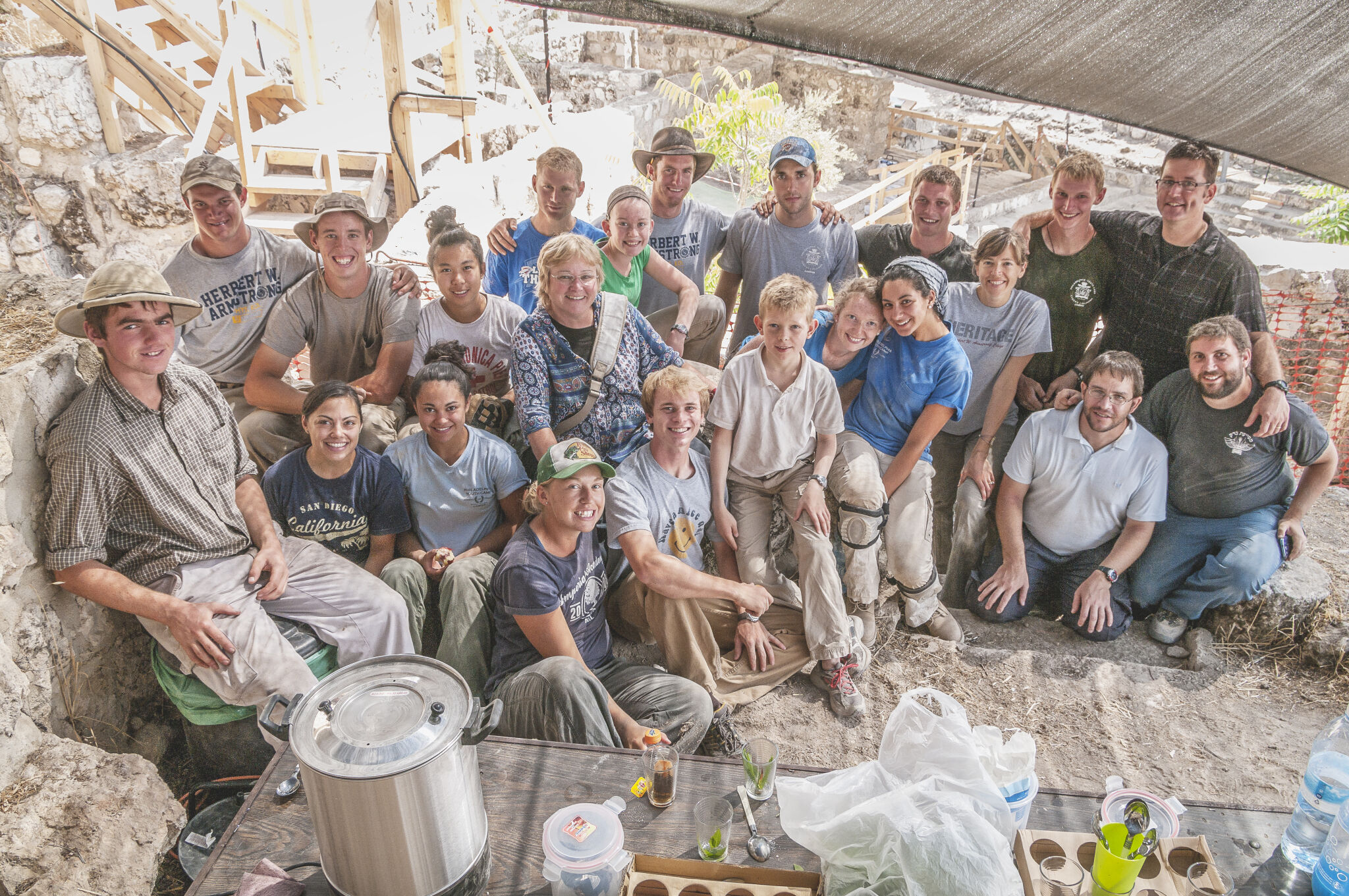In August 2012, Herbert W. Armstrong College sent 17 volunteers to Jerusalem to participate in Dr. Eilat Mazar’s Ophel excavation, which ran from August through December. During this phase, Dr. Mazar and her team reached Iron Age (1200–586 b.c.e.) layers. In addition to supplying laborers for the excavation, aiba assisted Dr. Mazar with processing the finds and preparing the final report for publication.

The goal: Regarding the excavation, Dr. Mazar told her staff: “[W]e are in the very core of the Ophel—the most important part. The potential is fantastic.” Being at “the very heart of the acropolis,” Dr. Mazar said to “expect … royal construction.” The 2012 excavation proved that the Ophel holds some spectacular treasures. Consider Dr. Mazar’s major discoveries from this phase of Ophel excavation.
Pithos inscription: Dating to the 11th to 10th century b.c.e., this fragment of pottery bears the oldest alphabetic writing ever discovered in Jerusalem. For years, exactly what the inscription read—and even the exact language it was written in—remained elusive. However, new reanalysis, conducted by expert epigrapher Dr. Daniel Vainstub, has brought together a remarkable convergence of biblical information.

In an article published on April 3 in Hebrew University’s Jerusalem Journal of Archaeology, Vainstub presented that the inscription is actually Ancient South Arabian (asa). Furthermore, that the inscription refers particularly to a trade of incense from the southern Arabian Peninsula known as ladanum (Cistus ladaniferus). This discovery provides evidence of the extensive trade that occurred between King Solomon’s Jerusalem and the kingdom of Sheba. (To better understand the significance of this discovery, read “Temple Incense From the Queen of Sheba? Reanalysis of the Ophel Pithos Inscription.”)
Proto-Aeolic pillar capital: One side of an ornately carved capital (a stylized stone placed atop a pillar to provide stability) was discovered by Dr. Mazar’s team. The early, recognizable proto-Aeolic form (an example of which is shown below) testifies to the skilled craftsmanship and royal use of this architecture during the First Temple period.
The Ophel capital is one of three that have been discovered in Jerusalem; the other two were discovered in the City of David. To learn more about the presence of these capitals in Jerusalem, read our article “Proto-Aeolic Capital Points to King David’s Palace.”

Herodian ritual baths: Used anciently for ritualistic purification, these stone structures—about a dozen of which were discovered within the 2012 Ophel excavation site—point to the proximity of and service surrounding Jerusalem’s second temple. To learn more, read Christopher Eames’s article “Jerusalem’s Temples: The Archaeological Evidence.”
A detailed synopsis of the major discoveries from the Ophel excavations can be found in our article “Discoveries of Eilat Mazar: The Ophel.”
